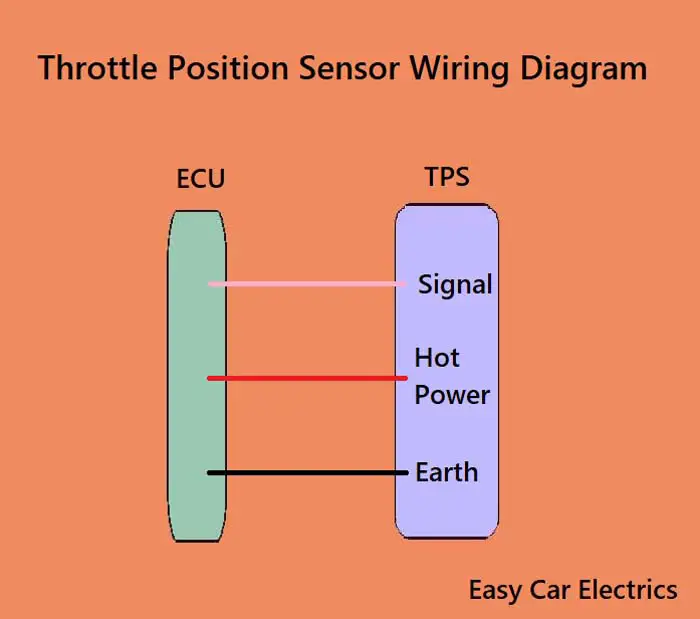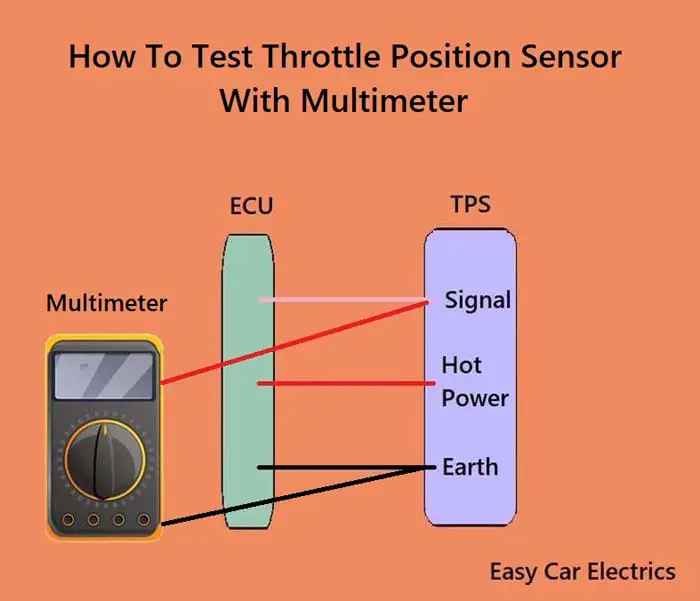
The throttle position sensor is a device that measures the position of the throttle in an internal combustion engine. The sensor is usually located on the throttle body. The sensor produces a signal that is proportional to the throttle position. The signal is used by the engine control unit to determine the amount of air that should be supplied to the engine.
The engine air intake is monitored by the TPS. As combustion requires a combination of air, gas intake, and fire, so, air intake is essential for an engine to operate effectively. When you step on the accelerator, you open the throttle to let air through, which opens the way for more gas.
There are a few ways that you can test your throttle position sensor (TPS). Here we will discuss three methods: voltage test, resistance test, and visual inspection.
- Voltage Test
- resistance Test
- Visual Inspection (Without Multimeter)
Related Post: What Is Throttle Position Sensor & Its Types: A Super Guide
1. How To Test Throttle Position Sensor With Multimeter
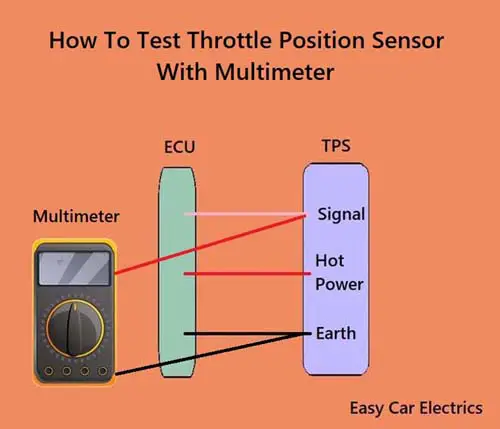
The Throttle Position Sensor can be tested by using the voltmeter by adopting the following procedure.
- First of all, let the engine be at normal temperature if the engine was operating.
- Now, locate the throttle body. In order to directly monitor the throttle position, the Throttle Position Sensor is typically mounted on the butterfly shaft.
- Identify the power, ground, and signal wires on the throttle position sensor.
- Turn the voltmeter dial to DC voltage readings.
- Now, after locating the Throttle Position Sensor, connect the black lead of the digital multimeter to the ground terminal of the Throttle Position Sensor.
- Now, just turn the Ignition key ON and do not start the engine.
- Now, connect the red lead of the multimeter with the positive terminals of the TPS sensor.
- The voltage should be 5-volt. And this voltage is called reference voltage which is given by the ECU to the TPS sensor.
- Now, It is time to check for the signal voltages.
- Connect the positive lead of the multimeter to the signal wire and the negative lead to the negative wire connector on the TPS.
- Now, turn on the ignition switch and start the engine, double-check that your throttle plate is closed completely. The first reading value displayed by your multimeter should be approximately 0.2 to 1.5 volts depending on the model of your multimeter. It should increase to 5 volts when you open the throttle plate.
2. Throttle Position Sensor Resistance Test
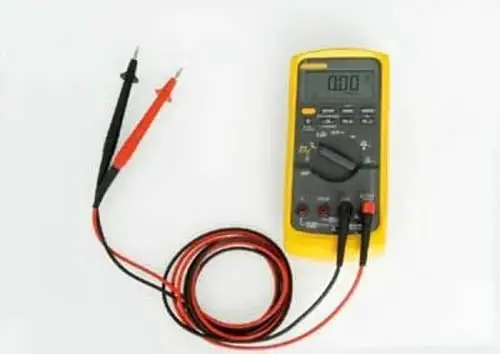
Another method for testing the throttle position sensor is by following a resistance test. The steps of which, are explained below.
- The safer method for testing the Throttle Position Sensor is by using the resistor.
- Disconnect the TPS connector. There are three wires going to the sensor body, the negative ground, the 5 Volt input, and the output to the harness onboard computer.
- Switch the range on your multimeter to the 20,000-ohm or the 20K ohm scale. To do this, simply turn the knob on the side of the device until the “20K” or “20kΩ” symbol is aligned with the arrow.
- Attach the positive lead from the multimeter to the positive wire of the TPS and the negative lead to the negative terminal of the TPS.
- Accelerate the throttle slowly through its full range of movement from its “closed” to its “fully open” position, while the digital readout on the DMM is monitored. The readout should steadily increase or decrease in accordance with the movement of the throttle linkage. If any sudden drops or increases appear in the reading, this means the TPS sensor contains a defect and requires replacement.
Related Post: Can You Bypass Throttle Position Sensor & Why You Shouldn’t
3. Testing Throttle Position Sensor Without Multimeter
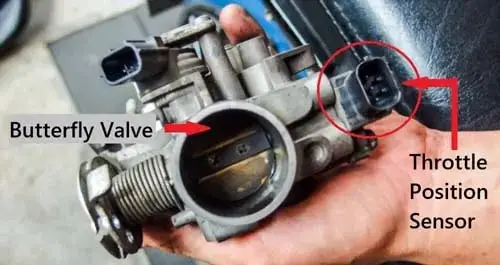
The method for testing the Throttle Position Sensor without the multimeter and just by physical inspection is explained in detail below.
- Inspect the sensor physically in detail to identify the specific causes of the failure.
- Check the sensor cable to see whether it is damaged or broken.
- Irrespective of whether there is rust or debris that needs to be cleaned, proceed to the connector. Check the sensor body to determine if any cracks could affect the performance.
- Check the Throttle Position Sensor cable assembly, if you believe there is no issue with the sensor’s physical condition.
- Ensure that the Throttle Position Sensor circuit in your car is compatible with this examination process.
- Reduction in Power, acceleration problems, rough idle, and illuminated check engine light also indicates the defect in the throttle position sensor.
Related Post: How To Calibrate (Reset) Throttle Position Sensor (7 Steps)
Conclusion
In conclusion,There are a few ways that you can test your throttle position sensor (TPS). You can do it with or without a multimeter. Testing your throttle position sensor is a relatively easy process that can be done at home or workshop with a few tools. Whether you use a multimeter or not, the most important thing is to pay attention to the symptoms your car is experiencing and to compare those against the results of your test. By doing this, you can ensure that your throttle position sensor is working properly and avoid potential engine issues down the road.
Sign Up

